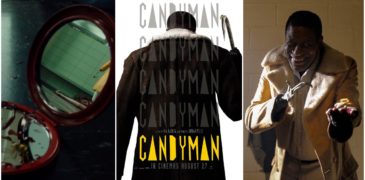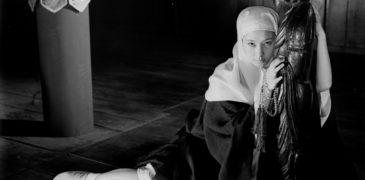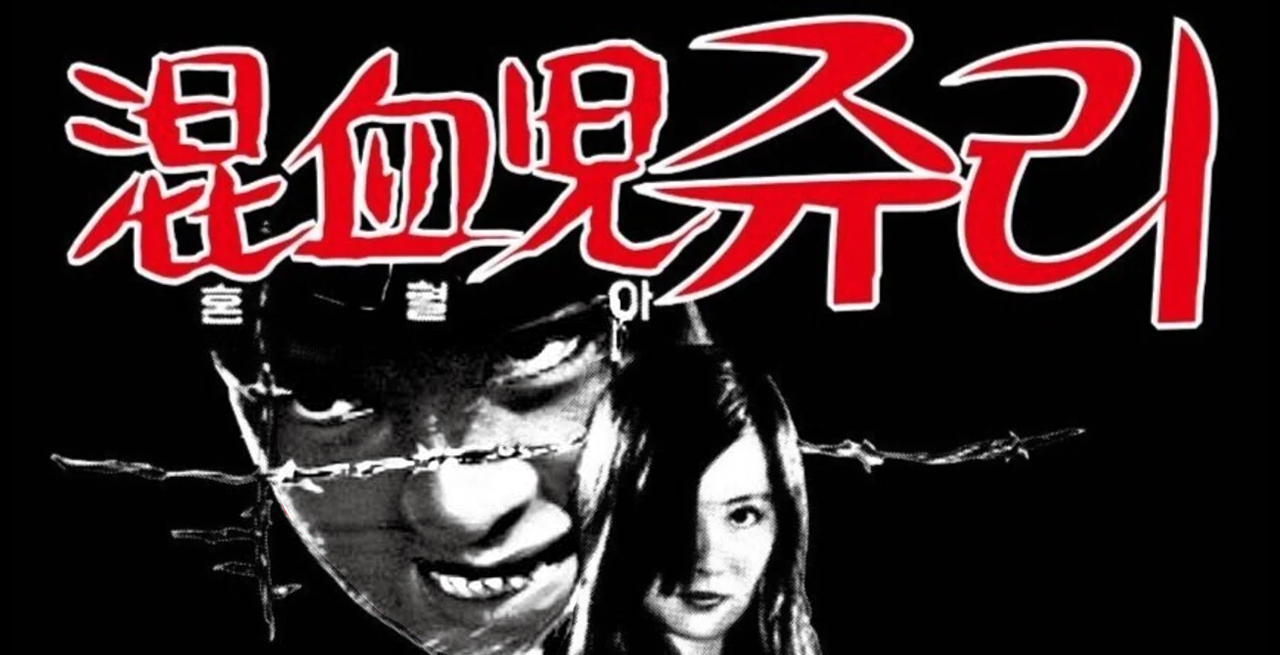
Strike of the Tortured Angels is a fairly obscure, though not totally unknown film; appearing in the 1980s as part of a wave of Asian films brought over to the west to satisfy the lucrative direct-to-video market of martial arts and exploitation films. However, until recently the actual origins had effectively been lost to time. Along with the retitling, English dubbing, fake Western names given to the cast and crew, and the fact that the film is shot in Hong Kong, it was always assumed that it was just another Hong Kong film like its contemporaries. Despite its IMDB entry as a 1982 Hong Kong film, Strike of the Tortured Angels is actually a Korean film from 1974 – originally called Konketsuji Julie – or Half-Breed Julie (konketsuji was a Japanese racial slur against mixed-race people with “mud blood” being the closest English equivalent) .
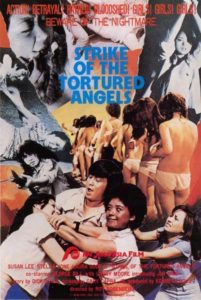
If the title sounds familiar, that is because, in 1972 and 1973, there was a trilogy of Japanese sukeban films released by Toho named Konketsuji Rika which follows the life of a young mixed-race delinquent as she deals with gangs, rapists, and the law. More about Konketsuji Rika and its influence on pinky violence can be read in our article on the history of sukeban cinema. Half-Breed Julie was never shown in Japan and its western title Strike of the Tortured Angels was also unknown, only being released on VHS in America and Europe. It is by absolute chance that one Japanese movie fan, Takeshi Uechi, randomly came across Half-Breed Julie on a Korean film database and instantly made the connection and it is thanks to him that this unique piece of history has been uncovered. Seemingly inspired by Konketsuji Rika and Japanese pinky violence films, Half-Breed Julie takes many of the Japanese pinky violence tropes and puts its own unique spin on them. Takeshi Uechi’s extensive research is linked at the bottom of the article – one important revelation of his is that Ko Nakahira, the director of the first two Konketsuji Rika films was working in Korea around the same time period. Whilst it is a possibility that he directed it under a pseudonym, it seems more likely that he may have had some involvement as a consultant with it unlikely that any of the pinky violence films that seem to have inspired Half-Breed Julie ever reached the shores of Korea, especially with its draconian film censorship during the 1970s.
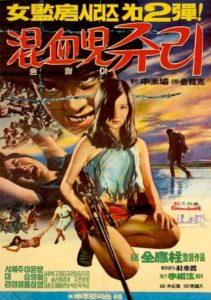
When a prison transport gets stuck in some mud, one prisoner, Susan, uses this as a chance to escape and attempts to jump into the back of a passing truck. Her attempt is unsuccessful, however, as the guard Mr. Lee gives chase and eventually wrestles her to the ground. The girls are then put on a boat and transported to their new island home – the Hong Kong Women’s Rehabilitation School, which looks far more like a WW2 POW camp with its barbed-wire fences and watchtowers than it does a typical reform school. During the trip, Susan has a chance to properly meet one of her fellow captives, the mixed-race Julie, who consoles her on her failed escape attempt. Once in reform school, we follow both Susan and Julie as the inmates take it upon themselves to haze the newbies.
In Susan’s dorm, the bitchy Jane demands absolute subservience, forcing the girls to their knees and pledge allegiance to her. Susan’s spirit is far too strong to fall into line beneath Jane and silently rejects her rule, immediately putting her at odds with the other inmates as they attempt to beat her into submission. In the next room, Julie is making far more of an impact, demanding that she be treated equally despite her mixed race. One girl takes issue with this and the Amazonian Julie quickly shows herself as a force to be reckoned with as she effortlessly throws her across the room before beating her unconscious. We later find out that Julie is not quite as formidable as it seems and it is revealed that she has tuberculosis, though she refuses to take medicine or seek treatment. Susan is keen to escape from the reform school as soon as possible and one night attempts to crawl underneath the perimeter fence. Julie, seeing this, realises that Susan will be caught and decides to knock her out and drag her to safety. Susan after a brief scuffle reveals to Julie that she seeks not only freedom but revenge on a cheating lover. We are shown in a flashback scene how Susan discovered that her boyfriend Doctor Kwok was having an affair with her mother whilst her crippled father lay bedridden at home. If that wasn’t bad enough, he was also sleeping with her sister on the side which eventually resulted in a pregnancy. After being refused an abortion and subsequently dumped by Doctor Kwok, her sister was eventually driven to suicide, detailing all the sordid actions of the Doctor in her suicide note. Needless to say, only murder will satisfy Susan’s thirst for vengeance.
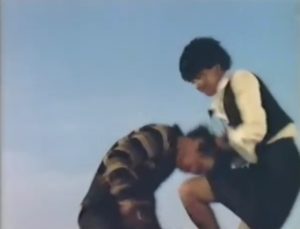
Susan, Julie, and Julie’s friend Ginger finally manage to make their escape by stowing away on a boat taking deliveries from the island, jumping overboard, and swimming to safety. Once on the mainland the girls capture a passing group of schoolgirls and steal their uniforms before going on the run. They must now try to keep low whilst the authorities search for them, however, this is not helped by Susan’s single-minded search for vengeance which leads to her becoming careless and constantly risks exposing the other girls. On top of this, Julie’s tuberculosis takes a turn for the worst and it seems she might not live much longer. Eventually, a plan is put together to kidnap the Doctor’s new lover and lure him into the deadly clutches of Susan.
Despite taking its name from Konketsuji Rika, even going so far as to copy the Japanese spelling of “konketsuji” instead of using the Korean equivalent (혼혈아), the film isn’t any kind of unofficial remake/adaptation as could first be assumed. Whilst it contains similar themes to Konketsuji Rika, along with other sukeban and pinky violence films, Half-Breed Julie is very much its own entity. Most of Half-Breed Julie’s initial inspiration no doubt came from the Shaw Brothers’ own women-in-prison film The Bamboo House of Dolls which the poster for Half-Breed Julie cheekily pretends that it is a sequel to, despite bearing absolutely no relation or resemblance to whatsoever (The Bamboo House of Dolls is set in a Japanese women’s POW camp during WW2). This is purely a marketing move due to the popularity of The Bamboo House of Dolls when it was released in Korea. Half-Breed Julie seems to have also taken some inspiration from western women-in-prison films such as The Big Doll House, which gives it a very unique hybrid vibe of the Japanese and western interpretations of similar genres coming together – one could even go so far as to suggest that Julie’s appearance might be somewhat of a tribute to Pam Grier.
The film is effectively split into two halves with the first focusing on reform school and the second focusing on Susan’s revenge mission post-escape. Whilst both halves have the potential to be quite compelling on their own, forcing them together never quite leaves them with enough time to naturally develop; this is a pity since there are many subplots and characters that could have really shone. Especially in the first reform school half we have the sadistic Jane and a cruel female prison warden who cares more for her savage Alsatian than she does other humans – two characters which could have easily been expanded upon given their introductions and would have provided plenty of opportunities to build a classic women-in-prison plot around.
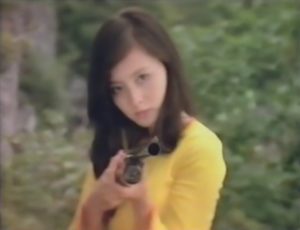
If there is one main criticism, it’s that the film has too much plot. With so much time dedicated to building up the melodramatic and continually convoluted story of the womanising doctor, the rest of the film is forced to kowtow to it, resulting in many potentially exciting scenes being cut short in order to fit in more exposition and scenes about Doctor Kwok. To its credit, the film is far from short on ideas with plenty of original and interesting scenes set up, only to fall into insignificance a few moments later when they are ended prematurely. For example, when the girls are on the run in their stolen school uniforms, they are approached by a biker gang who initially proposition them before threatening them with rape. Julie is quick to fight back and the assumption is that this scene will escalate into a full-on pinky violence style showdown. However, all but a minute later the bikers are quickly defeated and the girls carry on their way. So much effort is spent to keep up a fast pace that a wealth of potentially great material is sacrificed.
Being a Korean film with the censorship that comes along with that, Half-Breed Julie is low on the sleaze factor, though some cleverly framed shots allow for scenes of semi-nudity that you would expect to find in an equivalent Japanese film such as Female Prisoner #701: Scorpion without actually showing anything too risqué. Still, being a women-in-prison film, a certain degree of sleaze is expected by audiences and Half-Breed Julie achieves this with a sequence of the hazed girls being forced to drag themselves on their bellies across a rough floor as the other inmates slash and scratch at them, eventually ripping off their shirts and shorts. This prison also enforces mandatory sunbathing in place of exercise, though the prison uniforms stay firmly on.
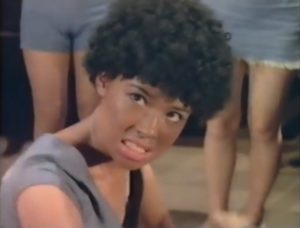
With an atrocious, almost comical, English dub, not much can really be said about the writing or acting. Seo Mi-Kyung manages to imbue Susan with a certain understated silent fury, not too dissimilar to Meiko Kaji’s portrayal of Sasori in the Female Prisoner Scorpion series; whilst the character of Julie is given excellent physicality by Choi Ryung who stands at least 6 inches above her co-stars, very much matching her statuesque Japanese counterpart in Konketsuji Rika (the impressive 5ft7 Rika Aoki). This is further enhanced by the decision to make Julie’s reform school uniform slightly too small, making the actress not only seem even taller but also giving her an incredibly strong, muscular appearance, almost like she is about to transform into She-Hulk any second. Choi Ryung is able to steal most scenes she appears in purely based on her physical stature, making her naturally intimidating and perfect for the hot-headed and violent Julie. Despite having the film named after her, Julie is relegated to a supporting role with Susan very much the protagonist. Unfortunately, Julie is never given any backstory and we never learn why she was sent to reform school in the first place. What little characterisation she receives comes via her tuberculosis diagnosis. In possibly her most important line in the film, when told she will die if she doesn’t seek medical help, she reveals how she hates her mixed-race looks and doesn’t see a future for herself. This heart-breaking attitude was sadly not uncommon amongst mixed-race people at the time, especially in Asia, faced with near-constant racism from their birth and taught to hate their mixed heritage. Such experiences were explored in detail in the Konketsuji Rika films as well as Stray Cat Rock: Sex Hunter.
One facet that separates Half-Breed Julie from its Japanese counterparts is the character of the reform school guard, Mr. Lee. Whereas in a pinky violence film, any male in his position would have been made into a misogynistic rapist, Mr. Lee is very much the opposite and is possibly the most decent character in the entire film. He recognises that relying purely on punishment will never rehabilitate and reform the inmates of the school and shows great generosity and understanding to all the girls, which is often taken advantage of. Unfortunately, Mr. Lee is the sole person given the task of capturing the girls when they escape and never provides the necessary threat and tension the plot demands: every time he comes close to capturing Susan he allows her to escape, opting to try and reason with her instead of using any physical force.
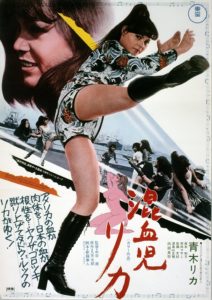
There is no shortage of reviews for Strike of the Tortured Angels on the internet, and any cursory search will lead you to a large selection of ratings mostly awarding it a 2 or 3 out of 10. Whilst it’s hard to disagree with that number on the face of it, I feel that knowing the history of the film does elevate it above the level of a typical bottom of the barrel low budget women-in-prison film. Being released in 1974 and not 1982 as initially thought, this came out during the height of not only Toei’s pinky violence genre but also American International Pictures’ slew of exploitation films. By placing Half-Breed Julie right in the middle of this era, it no longer appears as a hackneyed latecomer but instead as an earnest entry sitting on the cutting edge of the exploitation zeitgeist. Even more impressively, knowing now that this was a Korean film with the immense censorship Korean filmmakers suffered from at the time, is that Half-Breed Julie even got made in the first place, showing how passionate and dedicated the filmmakers were to tell this story.
Films of this type simply weren’t being made in Korea at the time, and even though the cast and crew were no doubt very inexperienced in this genre, they were clearly still able to give it their best shot. Whilst Half-Breed Julie is by no means a great film, it could have been far worse and with its ability to stand shoulder-to-shoulder with similar Japanese and western films of the same period, I think should be viewed as a success by its creators especially since it is the first film of the genre ever made in Korea. Korea would receive a handful of other similar films later in the decade, most notably the two Female Prisoner #407 films from 1976, though these proved too much for the censors and actually lead to them forcing the production company to shut down.
Given that it is no longer the 1970s it is probably best to take an objective view at the massive elephant in the room when it comes to this film: Choi Ryung is not mixed-race and is rather clumsily smeared with brown paint and given a fairly terrible afro wig. Whilst the kneejerk reaction is to see this as incredibly racist, it is worth bearing in mind that this is a Korean film. Blackface is so offensive, not really because people are pretending to be another race or taking jobs away from black actors, but because of its historical context. In the 19th and early 20th centuries, blackface was predominantly used by white entertainers to portray offensive stereotypes and caricatures of black people, effectively making them out to be clowns. Korea has no such shared history with western entertainers; further to this it is doubtful that Korea even had any half-black actresses working at the time. At no point is Julie portrayed any differently than the Korean characters and throughout the film, she is shown as a strong dignified person. Despite her character lacking a proper backstory, she feels very three-dimensional and helps to tackle themes of racism that just weren’t present in other Korean films at the time.
Strike of the Tortured Angels can be watched in its entirety for free on youtube courtesy of the Wu-Tang Collection:
Below you can find both of Takeshi Uechi’s fascinating and impressively detailed articles on his re-discovery of Half-Breed Julie and its history:
https://note.com/19290105/n/n7862c9101a69
https://note.com/19290105/n/n711ee15aa461
More Articles
Director Nia DaCosta’s kind of mostly sequel to the 1992 original revives the Candyman. Say his name five times in the mirror if you dare, as Cabrini Green has dark… Despite being one of Japan’s biggest film studios throughout the late 40s and 50s during the golden age of Japanese cinema, Daiei was struggling by the mid-60s and had… It feels like there is constant chatter online about the decline of the horror genre. Yet, for every hollow remake and safe studio engineered big-budget vehicle, there is a wealth… If childhood memories could be distilled into pure energy, they would probably seem as radioactive as the golden glow emitted from the spray-painted wheat fields of The Reflecting Skin. Otherworldly,… New Orleans, with its rich history and lots of tourist-friendly attractions, is a perfect setting for a horror movie – especially if it has anything to do with voodoo –… It may seem odd to call a film as austere and violent as Undergods beautiful, with its bleak tones against a setting reminiscent of Cold War Era Brutalist architecture, all…Candyman (2021) Film Review – Don’t Speak His Name
Secrets of a Woman’s Temple (1969) Film Review – Temptation, Torture, and Treachery
Coming Home in the Dark (2021) Film Review – A Night Drive Straight into Hell
The Reflecting Skin (1990): A Brief Examination of Vampires (and Other Bad Things) in Broad Daylight
Fat Tuesday Film Review (2018) – A Mardi Gras Killing Spree
Undergods (2020) Film Review: Beautiful and Brutal Art House Horror

Hi, I have a borderline obsession with Japanese showa-era culture with much of my free time spent either consuming or researching said culture. Apparently I’m now writing about it as well to share all the useless knowledge I have acquired after countless hours surfing the web and peeling through books and magazines.
